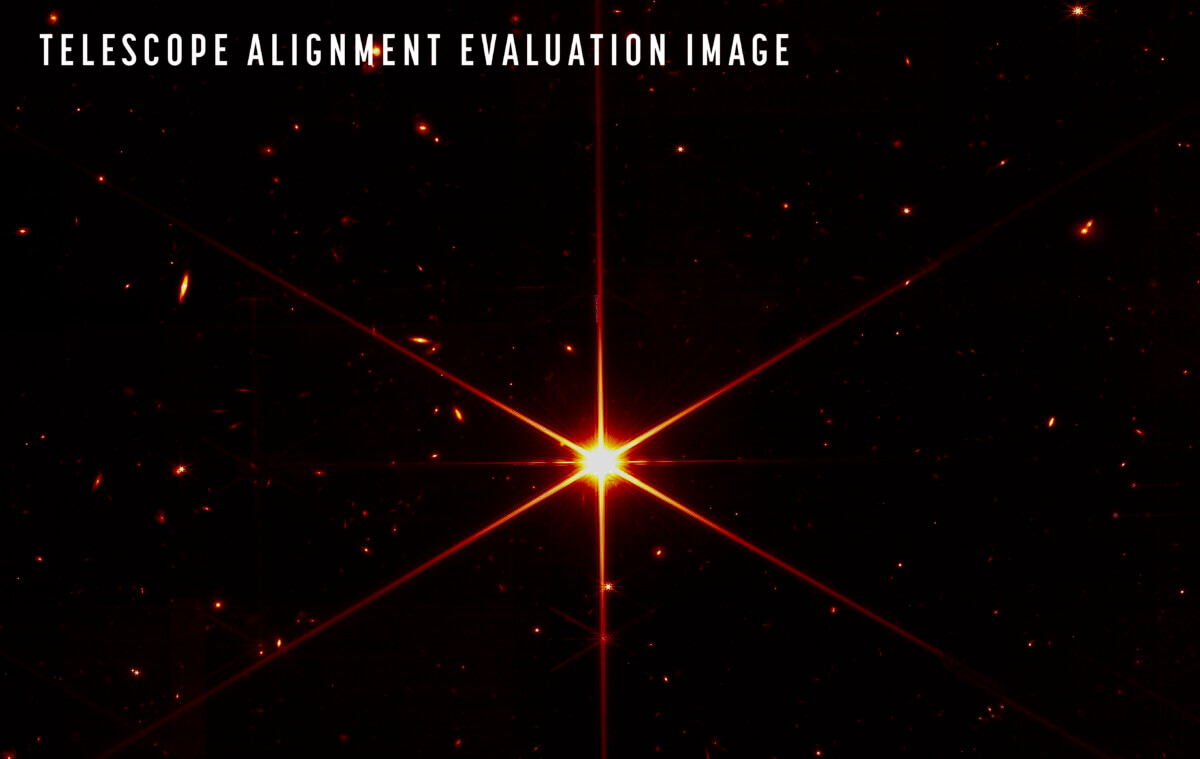
While the purpose of this image was to focus on the bright star at the center for alignment evaluation, Webb's optics and NIRCam are so sensitive that the galaxies and stars seen in the background show up. At this stage of Webb’s mirror alignment, known as “fine phasing,” each of the primary mirror segments have been adjusted to produce one unified image of the same star using only the NIRCam instrument. This image of the star, which is called 2MASS J17554042+6551277, uses a red filter to optimize visual contrast. (Credits: NASA/STScI)
WASHINGTON — The James Webb Space Telescope's stunning pictures of a distant star are now the “highest resolution infrared images taken from space ever,” according to scientists at NASA.
The space agency says the revolutionary telescope completed a key stage in the alignment of its mirrors on March 11. Now that this “fine phasing” is done, James Webb is able to gather light from distant objects in space and deliver it to its instruments. Although scientists say it'll still be months before the telescope is regularly sending back amazing new images of the cosmos, the probe's latest milestone proves it's working well.
“More than 20 years ago, the Webb team set out to build the most powerful telescope that anyone has ever put in space and came up with an audacious optical design to meet demanding science goals,” says Thomas Zurbuchen, associate administrator for NASA’s Science Mission Directorate, in a media release. “Today we can say that design is going to deliver.”
Although the new image from James Webb was only trying to focus on a single bright star, the telescope's optics are so sensitive they captured other galaxies and stars in the background. As for the “star” of the show, James Webb focused on 2MASS J17554042+6551277 and used a red filter to optimize the visual contrast of the distant star.

What makes James Webb unique?
While some of the largest telescopes on Earth use a collection of mirrors to gaze into the cosmos, James Webb is the first manmade telescope to use this design out in space. The probe uses 18 hexagonal, beryllium mirror segments to collect light from distant objects and sends those images back to scientists here on Earth.
“In addition to enabling the incredible science that Webb will achieve, the teams that designed, built, tested, launched, and now operate this observatory have pioneered a new way to build space telescopes,” says Lee Feinberg, Webb optical telescope element manager at NASA’s Goddard Space Flight Center.
“We have fully aligned and focused the telescope on a star, and the performance is beating specifications. We are excited about what this means for science,” adds Ritva Keski-Kuha, deputy optical telescope element manager for Webb at NASA Goddard. “We now know we have built the right telescope.”
Currently, the NASA team is on track to complete the probe's Optical Telescope Element alignment by May 2022. Webb's first “full-resolution imagery” and other scientific data is set to reach Earth this summer.










